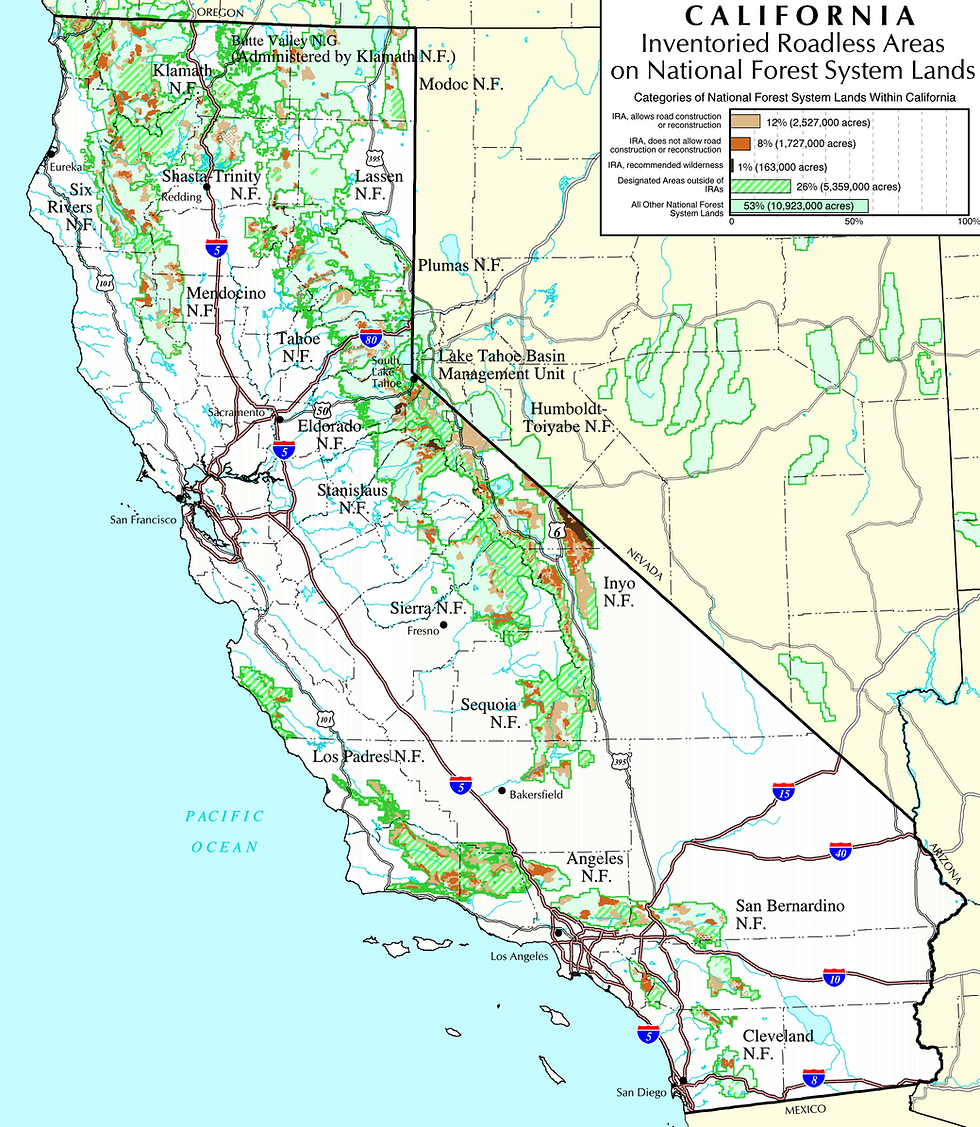Updated Action: Severe Drought Leaves Klamath Salmon Thirsty for More Water
- EPIC Staff
- Aug 5, 2013
- 4 min read
Updated: Aug 30, 2023

Update: On August 22, Judge O’Neill ruled that water will be released from the Trinity Reservoir to prevent another fish kill in the Klamath River. However, only about a third of the 62,000 acre feet will be released, so that the irrigators can store most of the water for next year. The action below is still valid, as it requests water rights that have never been honored, which would give Humboldt County and downstream users no less than 50,000 acre feet. This would alleviate the need for last minute emergency water releases to avoid future fish kills.
Take Action Now. Healthy wild salmon populations are a significant life source for our bioregion. They are a crucial part of the food chain that many other species depend on. Salmon populations up and down the North Coast are just shadows of their historic abundance, but one species is of particular concern. Wild Coho salmon have been listed as threatened since 1997. Still, more than 15 years later these fish are experiencing pressures on many fronts: drought conditions, competition from hatchery fish, disease, road development, an explosion in unpermitted water use throughout the bioregion, and major dam infrastructures that are used to store and divert water for hydroelectric generation and agricultural irrigation.
Temperatures are up and water levels are dropping as the summer progresses into fall. This year has been particularly hot and dry, and has been identified as California’s driest January through June on record. According to experts at the National Marine Fisheries Service, it is estimated that 272,000 salmon will be swimming up the Klamath River to spawn this year, which is about 100,000 more fish than packed into the river when the 2002 Klamath fish kill took place leaving over 30,000 fish dead before they could lay eggs and reproduce.
Klamath-Trinity water wars have been taking place for decades. During dry summer months, water becomes scarce, and the battle begins. Farmers and ranchers want water for their crops and livestock, Pacificorp wants to use water for making electricity, tribes want to continue to sustain themselves as they have in the Klamath Basin for over 7,000 years, fishermen want healthy fish populations so they can make a living and feed their families, and environmentalists want to preserve wild fish populations and protect wildlife refuges crucial to migratory birds.
The Klamath Basin Restoration Agreement is a controversial framework that would remove four antiquated dams from the Klamath River, but it would also lock in what some would consider unsustainable water rights for irrigators. If the KBRA were in effect this year, according to Michael Connor, Commissioner for the Bureau of Reclamation, 353,000 acre-feet instead of the current projected 319,125 acre-feet would be allocated to Klamath Project irrigators. Meaning even more water would have come out of the river to be given to irrigators.
Regina Chichizola, Rivers Communications Coordinator at Hoopa Valley Tribe, has “received reports that a couple thousand juvenile and at least 100 adult fish are pooled up in the refuge areas at the mouth of Blue Creek because the Klamath River is so hot.” People are encouraged to take photos of and report the location of any pooled fish or fish kills to the California Department of Fish and Game’s CalTIP number (888) 334-2258. Reports will be forwarded to the Klamath Fish Health Assessment Team who is tasked with responding to imminent or active fish kills.
In an effort to reduce the likelihood of large-scale fish die-offs, the Bureau of Reclamation approved the release of 62,000 acre feet of water into the Trinity and Lower Klamath Rivers from the Trinity and Lewiston Reservoirs between August 15th and September 21st, but San Luis & Delta-Mendota Water Authority and Westlands Water District (irrigators from the central valley), have filed a temporary restraining order with a Fresno Judge that has stopped the water from flowing into the Klamath.
Regardless of the status of the Bureau of Reclamation’s proposed Trinity River flow augmentation, at least 50,000 acre feet must be released downstream, as stated in the Trinity River Division Act of 1955: “not less than 50,000 acre-feet of water shall be released from the Trinity Reservoir and made available to Humboldt County and downstream water users.” To date, this allocation has not been honored, and now with current drought conditions, record-breaking heat days, a pending fish kill, and the Twin Tunnels – Bay Delta Conservation Plan looming in the background, the Trinity River’s water is more coveted than ever. EPIC is calling on you to ask the Department of Interior Secretary Sally Jewell to release water downstream as guaranteed under the 1955 Act.
The Environmental Protection Information Center has advocated for the recovery of wild Coho salmon populations for decades. EPIC has defended headwaters and forests that provide clean cold water and valuable habitat for wild fish, protected Coho under the Endangered Species Act and demanded that hatcheries apply the best available science to protect wild fish populations from hatchery fish that compete with, prey upon, and interbreed with wild salmon. EPIC will continue to advocate for keeping cold and clean Trinity and Klamath water flowing in the rivers.





Comments